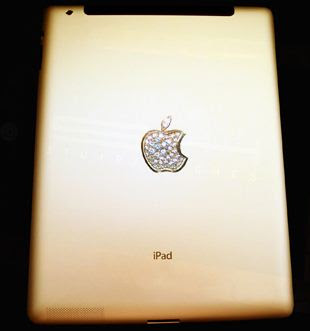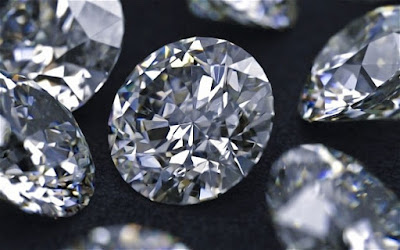
The European Union (EU) team resident in Zimbabwe is scared of discovering the truth about diamond fields in Chiadzwa. They chickened-out of an offer to go on a fact-finding visit to Marange diamond mining area after their handlers headquartered in Brussels back-tracked. The common-sense perception derived from the turn-around is that, Brussels feared that allegations of alleged human rights abuses in the area would be disproved. The EU is fully conscious of the fact that they are using lies and trumped-up charges to deny Zimbabwe the legal mandate to sell its diamond on the world market freely.
Minister Obert Mpofu of Mines and Mining Development confirmed that the government cleared the fact-finding team but the mission abandoned the mission amid fears that the alleged human rights abuses at Marange, being peddled by the US, the European Union, Canada and Australia who had argued that the gems were "blood diamonds", would be exposed as non-existent.
"Government of Zimbabwe cleared them to get the actual facts on the ground and prove their claims but they have been shunning the offer. And gates are still open for them anyway," said Cde Mpofu. Minister Mpofu said a number of media houses had also been cleared to get first hand facts. EU Ambassador to Zimbabwe Mr Aldo Dell' Ariccia also confirmed that they had been cleared to tour Chiadzwa mining fields. He said the delegation failed to take up the offer because the entourage needed to synchronize its travel dates.
"On the occasion of a courtesy call on the Minister of Mines, Mr Mpofu, the Minister invited the EU Ambassador and other diplomats to visit the Marange diamond production area," said Mr Dell' Ariccia.
"The visit was meant to give the diplomats a first hand impression on the region, with the understanding that it would not replace the official procedures foreseen in the Kimberly Process to monitor diamonds production.
"Unfortunately, it has not yet been possible so far to find a mutually convenient time to make the visit. But the invitation has not been refused."
Mr Dell' Ariccia said the EU was working with the Kimberly Process to find a solution on diamonds from Marange.
Sources close to the issue, however, maintained that the EU was afraid of confronting the truth adding any institution concerned about the diamond mining and alleged human rights abuses would have grabbed such an opportunity with both hands.
The EU has been on the forefront of going against KP chairman Mr Matheiu Yamba's decision to grant Zimbabwe the green light to trade in its gems.
The EU High Representative for Foreign Affairs, Mrs Catherine Ashton, issued a statement just after Mr Yamba's June 24, 2011 decision, saying the Marange diamonds should not be traded on the international market.
"The EU considers that any agreement needs to provide sufficiently credible basis to bring the whole of Marange mining area into compliance," said Mrs Ashton.
"This has to be done through a proper application of the KP procedures.
"The EU notes that consensus is necessary for diamonds
from Marange to be traded under the KP Certification Scheme."
Minister Mpofu said it was surprising that an organisation with such strong suspicious views against Zimbabwe's diamond exports would spurn an offer to tour Chiadzwa, where they would have an opportunity to authenticate or realign their perceptions.
EU actions are hypocritical as they back-track when reality is facing them through a painful discovery. Ever since the EU has never had a chance to tour Marange diamond fields. Whatever decisions they support against the Chiadzwa diamond fields are based on hear say, which in most of the cases is far-fetched as crafted by Zimbabwe’s detractors. Then one wonders why all of sudden they would show reluctance to discover the truth for themselves.
The West’s decisions on Zimbabwe are premised on their grand plan of the illegal regime change agenda. Whatever minor issues they say about Zimbabwe are mere scapegoats meant to cover their plot against this country. The illegal sanctions they imposed on Zimbabwe 2001are a clear-cut testimony of all their actions.
African diamond producing countries will strengthen the African Diamond Producers' Association (ADPA) to repel vicious opposition from western countries determined to scuttle exportation of gems from Zimbabwe's Marange fields, details of ADPA summit indicated recently.
Government sources who attended the third ordinary meeting of the ADPA Council of Ministers in the Democratic Republic of Congo recently said members were convinced that a united front in support of Zimbabwe had already unsettled the intense opposition.
The decision by the African gem producing grouping reinforced Mines and Mining Development Minister Obert Mpofu's tough stance at the meeting where he was reported to have declared that the grouping should reject external influence from western economies aimed at dictating the direction of the regional diamond industry.
"We need to fully fund this initiative (ADPA) because others will want to come in," Mpofu said. "We should spell out what we want to achieve without receiving support with strings attached."
Last month, the Kimberly Process Certification (KP) endorsed exportation of diamonds from Mbada Diamonds and Marange Resources, the two companies that are exploiting gems from eastern Zimbabwe.
Government says a flurry of five-year targets announced recently would revolve around diamond mining where exports had been averaging 1.2 million carats per month, generating US$60-$70 million per month.
This year the diamonds sector, which has reported strong growth in output since Minister Mpofu took over, are projected to generate about US$500 million, significantly easing an intense puzzle that has blighted the power-sharing administration after failing to bankroll crucial social spending programmes from a shoe-string budget.
"Countries opposed to Zimbabwean exports are getting unsettled by the united front from ADPA," a source told the media.
African countries reaffirmed their support for exports of diamonds from Marange. Outgoing ADPA chairperson and South African Mines Minister, Susan Shabangu reiterated South Africa's willingness to take diamonds from Zimbabwe.
"Most of our diamonds are now going through South Africa. They are then re-exported through South Africa.," the official said.
Zimbabwe projects that exportation of diamonds from the Marange region would drive revenues into the fiscus and help government fund its commitments.
Official statistics indicate that during the first quarter of 2011, diamonds generated US$300 million, with US$174 million being channelled into treasury.
The Medium Term Plan (MTP), a five-year economic blue-print presented by Economic Planning and Investment Promotion Minister Tapiwa Mashakada recently, projects that diamond output would increase by 44 percent in 2011 to eight million carats, before climbing to 12 million carats in 2012.
The MTP predicts that output would rise to 15 million carats in 2013, 18 million carats in 2014, and 21 million carats in 2015. "Diamonds are a major source of growth during the plan period," the blueprint said.
"Progress that the government has made to date with regards to the Kimberley Process Certification will help spur the contribution of the sector going forward. The government will continue to work on improving accountability and transparency with regards to the exploitation of the diamonds in the country," the MTP said.
African countries produce about 75 percent of global diamond output but are increasingly getting irritated by the fact that the region had least benefited from the resource.
























